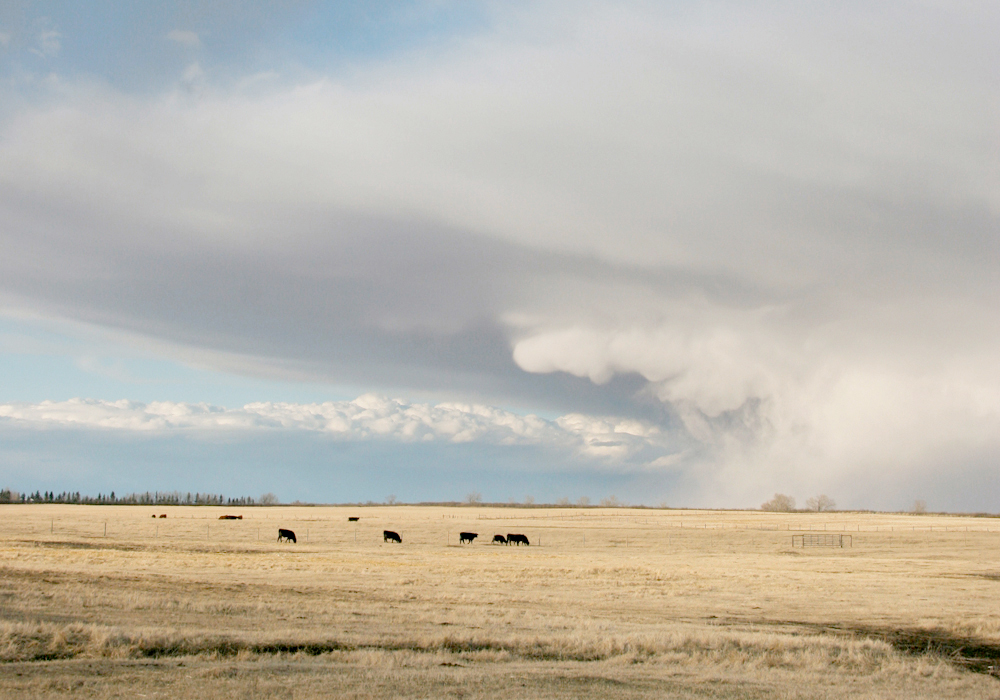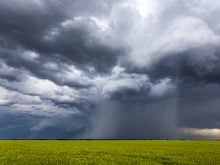What are the ingredients for severe thunderstorms? First, you need rising air. To get that, you need heat. Or more accurately, you need a large difference in temperature between two areas.
There are a couple of ways you can achieve this. One that most people are familiar with is to have a very hot day, but just having a hot day does not mean that there is a large difference in temperature. To get thunderstorms on a hot day, you need to have cool air aloft.
Sometimes we can get severe thunderstorms when we don’t have particularly warm air at the surface. Two different scenarios can play out when this happens. The first would be if there is very warm air a few thousand feet up from the ground. This warm air has cold air above it and, just like the case of a hot day on the ground, can rise, giving us elevated thunderstorms. We typically see these types of storms in the spring, but can experience them at any time during the summer and fall.
Read Also

Saskatchewan throne speech promises strong economy
Saskatchewan’s legislative agenda for the coming year will focus on meeting the challenges of new world trading relationships, said the speech from the throne.
The second scenario is when there is a strong contrast of warm and cool air at the surface. In other words, we have some type of front cutting through an area. On one side of the front, it is cold; on the other side, it is warm. The cold air acts like a wedge and forces the warm air up.
This sometimes occurs when a cold front is moving into an area. The day starts off warm and then the cold air pushes in, lifting the warm air in front of it and giving us thunderstorms. It can also happen when warm air is moving into a region. The day starts off cool and then storms develop as the incoming warm air rises over the cool air.
A few more ingredients are also needed.
Water vapour, or humidity, is key. It takes energy to evaporate water. The more water vapour there is in the air, the more potential energy there is. To get at this energy, the water vapour needs to be changed back into a liquid form: it needs to condense. As our warm air rises, it cools. As it cools, water vapour will begin to condense. When it condenses, it releases the energy it absorbed when it evaporated.
This energy is released in the form of heat — a lot of heat. One kilogram of water vapour condensing releases 2.26 million joules of heat energy, enough to boil half a litre of water.
To put it together, our rising air is cooling as it rises, but not as fast as the air around it, so it continues to rise. Then, condensation starts, releasing heat into the air. This makes our rising air even warmer than the air around it, so it rises even faster.
Now it is starting to sound like we have things in place for a severe storm, but not quite.

As we’ve previously discussed, if you have air continually rising up, eventually the amount of air accumulating at the top of the storm will become so great that it just has to fall back down again, wiping out the storm in the process.
To get around this problem, we need some kind of vent at the top of the storm to take away all the rising air. We need a strong jet stream of air over top of the storm to “suck” away the accumulating air.
Now, we have the main ingredients for a severe thunderstorm to develop.
There are other factors that can come into play. These factors not only help develop heavy rains but the other hallmarks of a severe thunderstorm such as high winds, hail, severe lightning and tornadoes. We’ll dive more into these in coming issues.
Daniel Bezte is a teacher by profession with a BA in geography, specializing in climatology, from the University of Winnipeg. He operates a computerized weather station near Birds Hill Park, Man. Contact him at dmgbezte@gmail.com.
















